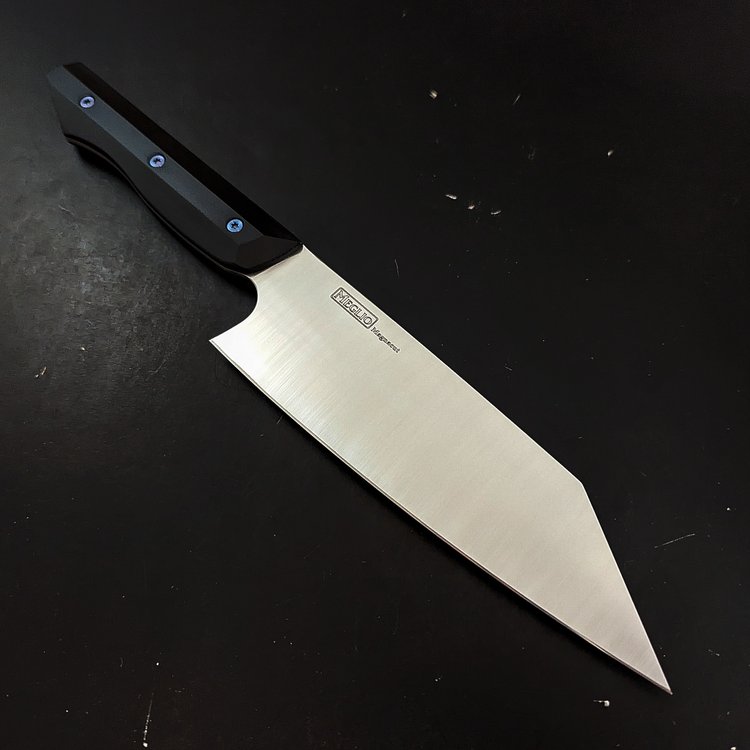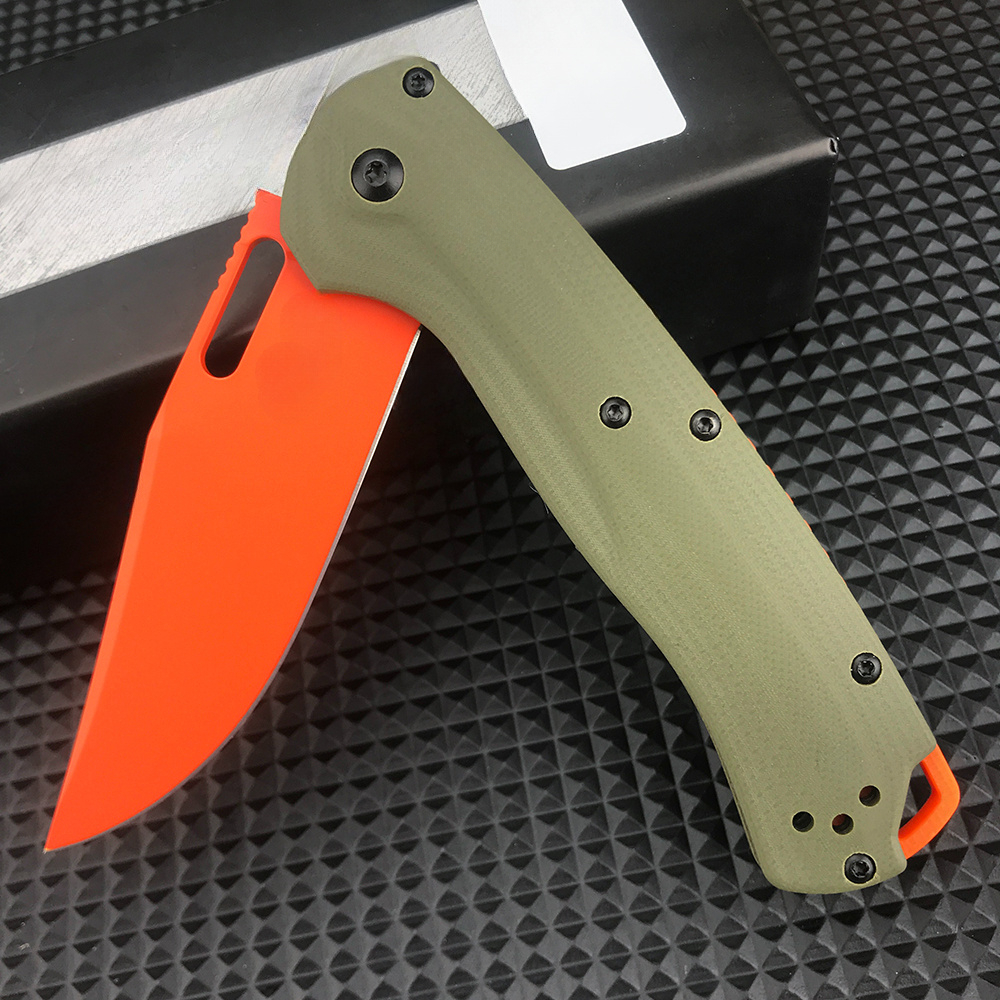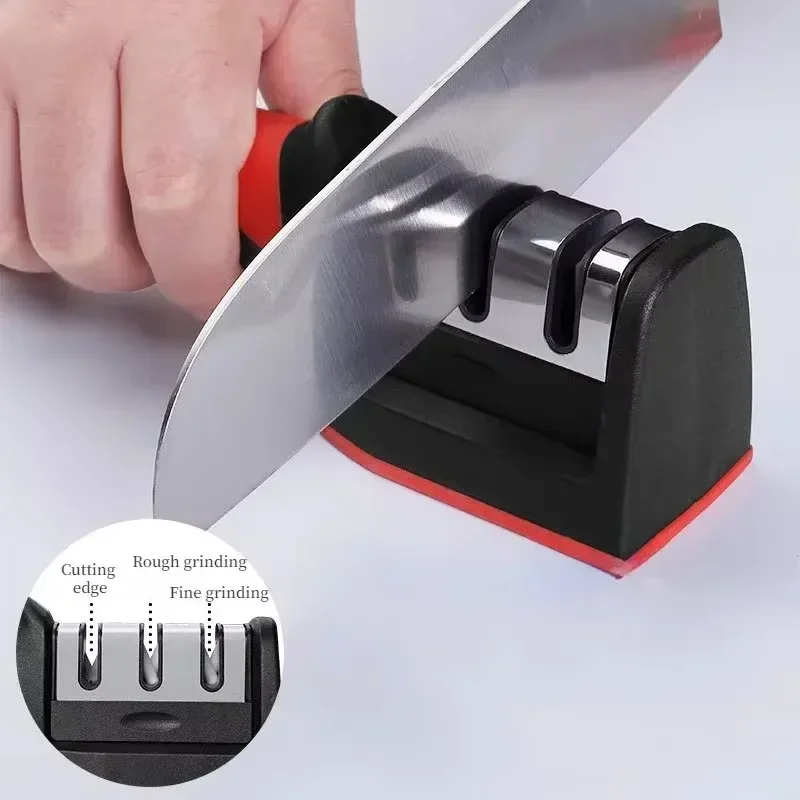Essential Kitchen Knives Overview
For both amateur chefs and seasoned culinary professionals, having the right kinds of kitchen knife styles is crucial. Let’s discuss key knives every kitchen should have.
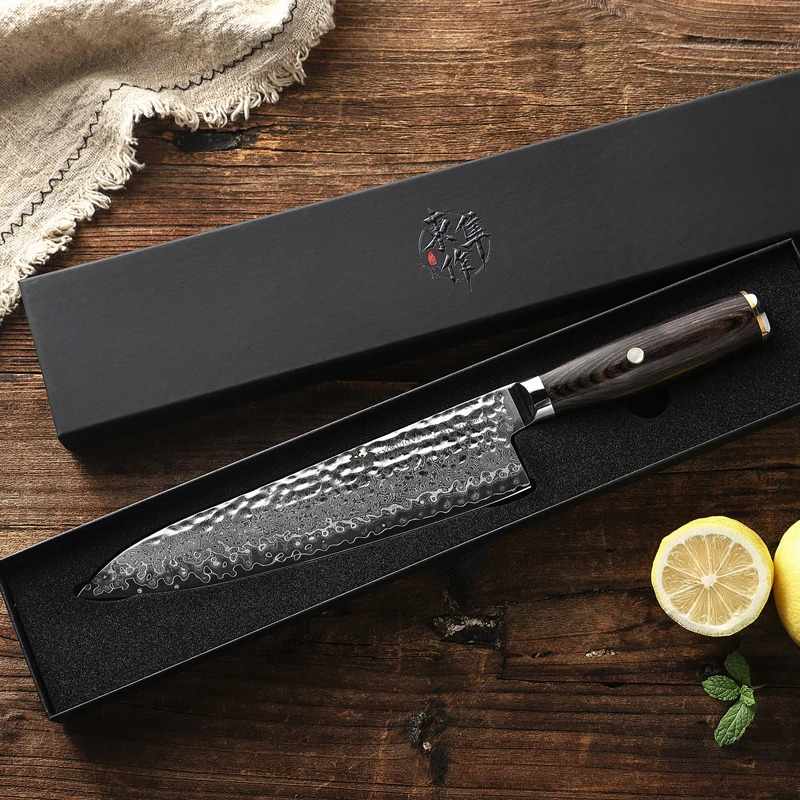
Chef Knives
Chef knives serve as the workhorse in the kitchen. They handle about 80% of all cutting tasks. These knives usually range from 6 to 12 inches in length, with an 8-inch knife being ideal for most people. The long, triangular, and slightly curved blade facilitates various cutting techniques.
Paring Knives
Ideal for tasks requiring precision, paring knives are essential for peeling, slicing small vegetables, and other meticulous work. Typically, these knives have a blade length of about 3 to 4 inches, making them perfect for detailed jobs.
Bread Knives
A must-have for slicing not only bread but also other soft foods without squashing them, bread knives feature a serrated edge. Usually about 9 inches long, this knife ensures clean cuts through crusty bread and soft tomatoes alike.
Specialty Knives Explained
Santoku and Nakiri Knives
Santoku knives shine in chopping, dicing, and mincing. These knives, typically 5 to 7 inches in length, have a flat edge and a sheepsfoot blade that curves in an angle approaching 60 degrees at the point. Recognized for its “three virtues”—chopping, dicing, and mincing—this style is a favorite for cooks needing precision and versatility combined with Japanese craftsmanship. Nakiri knives, on the other hand, are a dream for vegetable chopping with their straight blade edges, making clean, even cuts easy. They’re the perfect kitchen companion for creating beautiful veggie platters or salads.
Cleavers and Boning Knives
Cleavers come in two main styles: meat cleavers and vegetable cleavers. Meat cleavers are robust and designed to cut through bone, while vegetable cleavers have thinner blades ideal for precise vegetable chopping. Boning knives, with their narrow and flexible blades, are indispensable for efficiently removing meat from bones and carving. They allow for tight control and are excellent for delicate work like filleting fish or trimming fats.
Japanese Knife Types
When exploring kitchen knife styles, Japanese knives stand out for their precision and design. Let’s dive into some popular Japanese knife types that can revolutionize your cutting experience.
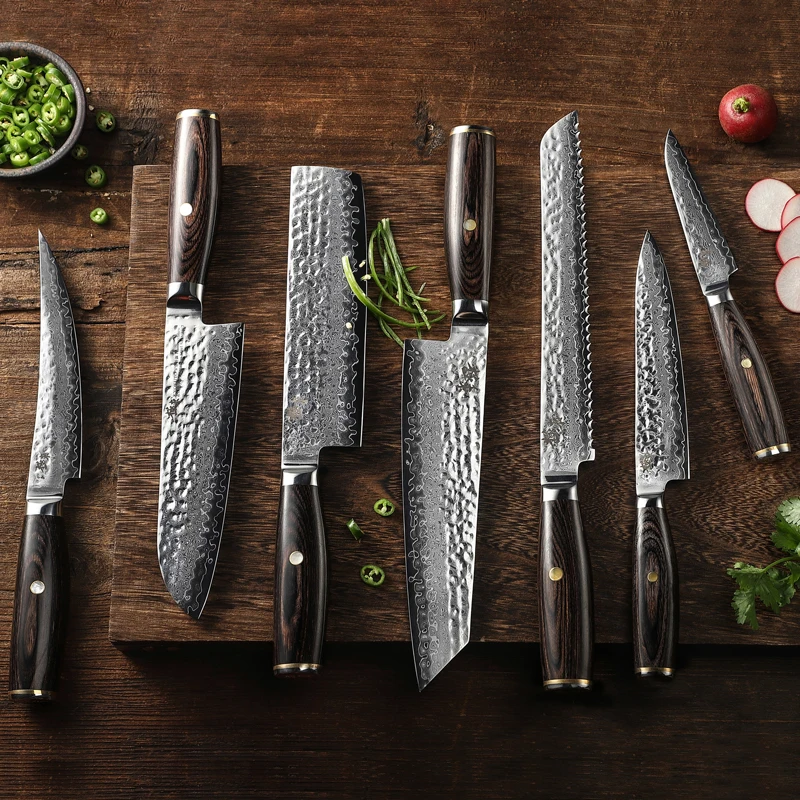
Gyuto Knives
Gyuto knives, often referred to as Japanese chef knives, boast a thinner blade than their Western counterparts. These knives are perfect for slicing meats and chopping vegetables, offering a versatile performance in the kitchen. The blades commonly range from 8 to 10 inches and provide a sharp, precise cut due to their harder steel composition.
Bunka and Usuba Knives
Bunka knives are multipurpose with a unique design, making them ideal for Western-style cuisine. They feature a wide handle and a versatile blade that can handle both short and long cuts with precision. Usuba knives, on the other hand, are vegetable specialists. They have a thin, straight blade ideal for making clean cuts through vegetables, ensuring your ingredients look as good as they taste.
Choosing Utility and Serrated Knives
Utility and serrated knives play distinct roles in the kitchen. Understanding their uses helps you choose the right ones.
Utility Knives Usage
Utility knives are versatile tools. They fill the gap between chef and paring knives. Ideal sizes range from 4 to 9 inches. These knives excel in cutting smaller items. They are perfect for tasks too small for chef knives, like slicing fruits and vegetables. You can use them for various kitchen chores or even during outdoor activities like picnics.
Serrated Edge Benefits
Serrated knives have a saw-like blade. They are essential for cutting through foods with tough exteriors and soft interiors. Examples include bread and tomatoes. The serrated edge grips the surface, reducing slippage and squashing. This knife is also great for delicate items like cakes or soft fruits. You get clean cuts without tearing the food apart.
Caring for Your Knives
Proper care for your kitchen knives ensures they remain sharp, safe, and durable. Here’s how to keep your knives in top condition.
Proper Cleaning Techniques
Start by hand washing knives with warm soapy water. Wipe the blade gently from the spine to the edge to avoid cuts. Avoid dishwashers as the heat and detergent can damage the knife. Dry immediately with a towel to prevent rusting.
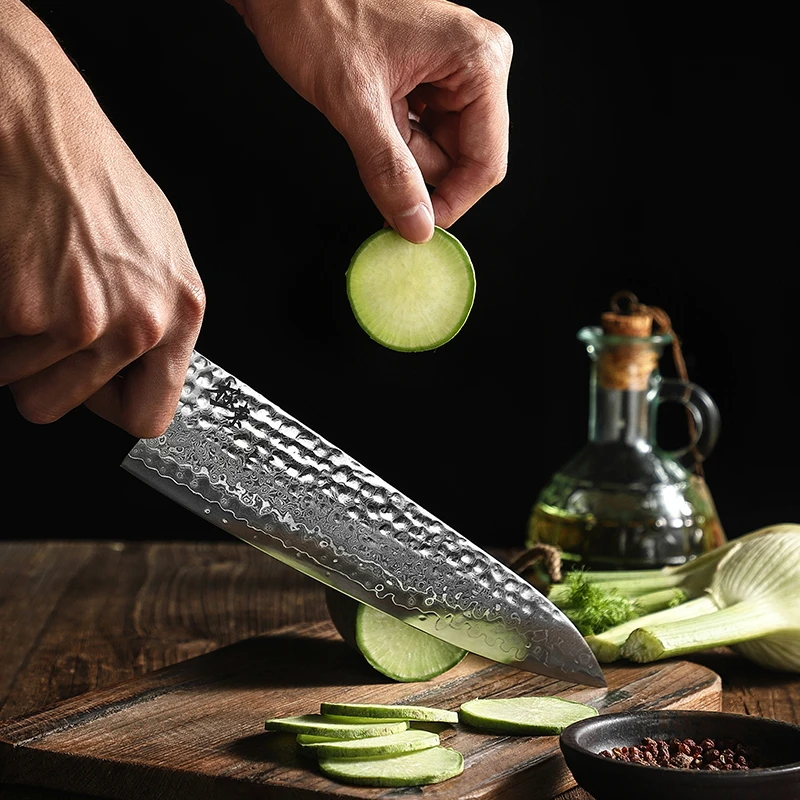
Sharpening and Storage
Regular sharpening keeps knives ready for precise cuts. Use a honing rod weekly and a whetstone for occasional thorough sharpening. Store knives in a block or magnetic strip away from moisture. Never toss knives into drawers where they can get dull or cause injuries.
Upgrading Your Kitchen Knife Collection
As your cooking skills evolve, you might find that your basic set of knives no longer meets all of your culinary needs. Upgrading your kitchen knife collection is not just about adding more knives, but about choosing the right tools to enhance your cooking experience and efficiency. Here’s how to go about it:
Assessing Your Current Needs
Take a look at what you cook most often, and evaluate your current knives. Do you struggle with certain tasks? Are your knives becoming dull too quickly or not fitting comfortably in your hand? Identifying these gaps will guide you on which knives to add.
Exploring Specialty Knives
Consider specialty knives that cater to specific tasks. For example, a sturdy cleaver works wonders on meat bones, while a nakiri knife offers unmatched precision for chopping vegetables. Look into Japanese knife types like Gyuto and Santoku for their unique blade shapes and sharpness. Research shows that a well-crafted Japanese knife can make food prep much easier.
Remember to factor in blade length, handle comfort, and the type of steel when selecting new knives. With a careful assessment of your needs and the diverse styles available, you can compile a kitchen knife collection that makes cooking not just easier, but more enjoyable too.
Styles of Knife Blades and Their Impact
The style of the blade on a kitchen knife can significantly affect its performance. Different shapes and edges serve various purposes in the kitchen.
Straight Edge vs. Hollow Ground
Most kitchen knives feature a straight edge, which allows for precise cuts. The straight edge is ideal for a majority of kitchen tasks, as it provides a clean slice. If you need to chop herbs or cut proteins, the straight edge will serve you well.
On the other hand, a hollow ground blade has small indentations along the sides. These indentations create air pockets, which reduce friction as the knife cuts through food. This style is particularly useful for slicing soft items such as tomatoes or cheese, as it prevents sticking.
Determining which blade style is right for you depends on your cooking habits. Experimenting with different knives can help you find the perfect fit for your kitchen needs.
Blade Material and Construction
The material used in knife construction significantly impacts its performance and longevity. Common materials include stainless steel, carbon steel, ceramic, and high-carbon stainless steel. Each offers unique benefits and drawbacks.
Stainless steel is popular due to its resistance to rust and staining. It requires less maintenance than other materials. However, it may not hold an edge as long as high-carbon steel.
High-carbon steel, while it requires more care, offers excellent sharpness and edge retention. It’s a favorite among professional chefs who value performance over convenience.
Ceramic knives are lightweight and can hold an edge for an extended period. However, they are fragile and can chip easily. This makes them less versatile than metal knives.
Understanding the various knife materials can help you choose the right knives for your kitchen.
Conclusion
Selecting the right kitchen knife can vastly improve your cooking experience. From versatile chef’s knives to specialized fillet and boning knives, understanding each knife’s unique purpose will allow you to navigate your kitchen with ease. Don’t forget to consider the blade’s style, material, and ergonomics when choosing your tools. The right knife can elevate your cooking to new heights. Happy cutting!
This article provides a comprehensive overview of kitchen knife styles. To maximize your cooking experience, consider the different types of knives available. Whether you are a novice or a seasoned chef, having the right tools makes all the difference in creating delicious meals.
